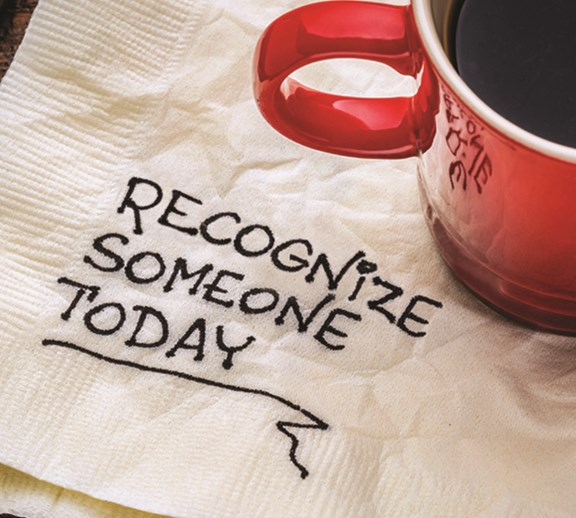Inspiring employees through revolutionary recognition and rewards
Written by: Steve Moss, Global Compensation Leader, Recognition, IBM; Norm Williams, Senior VP, Clients & Brand, BI WORLDWIDE
(View Author Bio)
If you asked your employees to share three things you do as an organization to inspire them, what would they say?

Inspiration is what moves us beyond the mundane toward the extraordinary. Academicians Todd Thrash and Andrew Elliot developed an Inspiration Index1 and found that inspired people:
- Were more creative
- Believed in their own abilities
- Had higher self esteem
- Were more optimistic
- Demonstrated increased effort
These findings are impactful for business and would most likely positively affect the trajectory of a company.
Through BI WORLDWIDE’s research on the New Rules of Engagement®2, we learned that inspired employees are:
- 2x more likely to stay for the next 12 months
- 44% more often willing to refer family and friends to their place of work
- More willing to put effort in their work (98% compared to 58% of uninspired employees)
If you were initially skeptical about the impact of inspiration in business, this research should remove those doubts. Inspired employees make a difference in multiple ways.
We also learned that employees who receive recognition are twice as likely to feel inspired. And employees who receive meaningful recognition are 10x more likely to be inspired than those who don’t. Meaningful recognition is defined as what the recipient values and appreciates. This means the giver has taken the extra step to understand what is important to the individual. Those are powerful findings but the real power comes from putting this information into action.
How one company moved from an inconsistent recognition program to an inspiring recognition and rewards strategy.
IBM was ready to take their 100-plus disparate recognition programs and create a cohesive recognition strategy that truly inspired their more than 250,000 global employees. The first step was to take a snapshot of the current situation. This involved a fact-gathering process that included:
1. Listening tours throughout the company to understand the current situation
2. Auditing disjointed programs
3. Holding stakeholder design sessions
4. Evaluating data, such as Net Promoter Scores (NPS)
The result? IBM created a three-tier recognition portfolio designed to recognize: behaviors, (peer-to-peer) accomplishments (discretionary manager to employee) and results (company to employee).

The framework focuses on the right reward for the effort given. All employees are given a points budget to recognize each other for exhibiting identified behaviors. This puts the power of recognition in everyone’s hands. Employees can choose to immediately redeem or accumulate their points for a wide variety of merchandise, experiences or travel. Larger rewards are given for bigger accomplishments as deemed by managers. Finally, at the top tier, recognition, such as a group or individual incentive trip, is awarded to those achieving identified business results.
IBM communicated the new strategy through email, IM nudges, a robust learning plan and leadership buy-in. They developed an intentional approach to reach employees across different channels and often to be sure everyone received the information and was onboard.
Did the shift make a difference?
Here’s what happened. Everyday recognition jumped 50% with this clearly defined, companywide structure. Employees who received points along with their recognition were excited to share their reward stories. They used points for memorable and inspiring experiences, like family trips or travel. Others used points to thank their loved ones, like an employee in India who gifted her mother her first microwave. Some used points to start a new hobby, such as learning to play the violin. Each of these stories had the same underlying result: an inspired and passionate employee.
Creating this global culture of recognition for IBM resulted in a 134% increase in unique givers of recognition in one year and a 41% increase in unique logins to the system. Equally important is the increase in the net promoter score (NPS) into the excellent range.
Five things you can do right now to get started
If you are looking to improve your recognition strategy, here are five things you can do right now.
1. Conduct an audit of existing recognition programs
2. Listen to your constituents
3. Build a business case to get corporate buy-in
4. Design new offerings fit for purpose
5. Tie in learning to reinforce recognition
____________________
To learn more about IBM's journey, listen to this webinar: Inspiration at work: How IBM recognizes their employees.
____________________
The best way to get started is to get in touch.

















